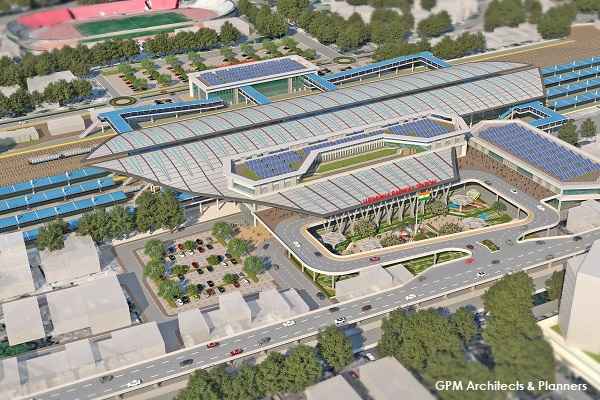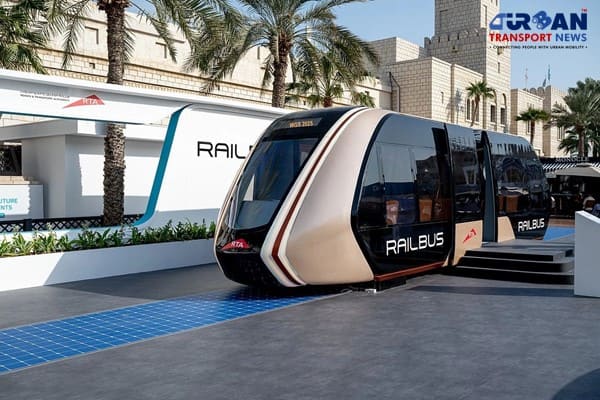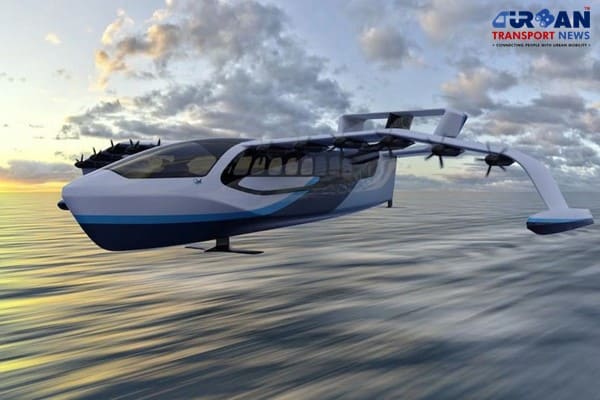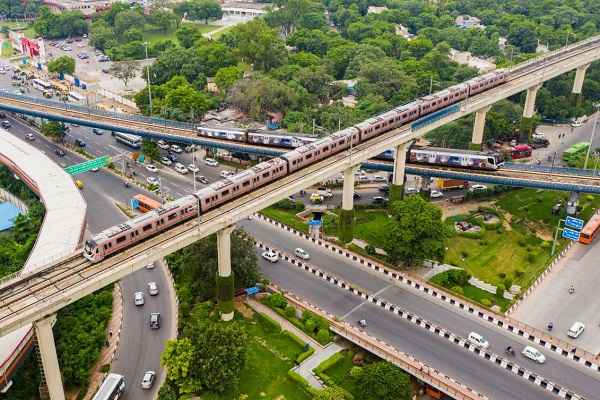 Delhi unveils ambitious Urban Mobility Vision: Luxury Metro Coaches, New Tunnels and Pod Taxi
Delhi unveils ambitious Urban Mobility Vision: Luxury Metro Coaches, New Tunnels and Pod Taxi Qatar approves Saudi Rail Link Agreement, Accelerating Gulf Railway Vision 2030
Qatar approves Saudi Rail Link Agreement, Accelerating Gulf Railway Vision 2030 UP Govt plans to introduce Water Metro services in Ayodhya, Varanasi & Prayagraj
UP Govt plans to introduce Water Metro services in Ayodhya, Varanasi & Prayagraj India’s First Urban Ropeway begins Trial Run in Varanasi, Set to carry 1 Lakh passengers daily
India’s First Urban Ropeway begins Trial Run in Varanasi, Set to carry 1 Lakh passengers daily India and Bhutan to Build First-Ever Rail Link: ₹4,033 Cr Project to Boost Regional Connectivity
India and Bhutan to Build First-Ever Rail Link: ₹4,033 Cr Project to Boost Regional Connectivity Patna to launch Eco-Friendly Water Metro; Trial Run soon between Digha and Kangan Ghats
Patna to launch Eco-Friendly Water Metro; Trial Run soon between Digha and Kangan Ghats Air India Group set to launch Flights Operations from Navi Mumbai International Airport
Air India Group set to launch Flights Operations from Navi Mumbai International Airport Chennai to launch 25-Year Mobility Plan with Unified QR Ticketing and One-App Transit System
Chennai to launch 25-Year Mobility Plan with Unified QR Ticketing and One-App Transit System Kochi Metro bags ₹4.4 crore contract to prepare DPR for Mumbai Water Metro Proejct
Kochi Metro bags ₹4.4 crore contract to prepare DPR for Mumbai Water Metro Proejct Navi Mumbai International Airport set for September launch; IndiGo and Akasa Air to lead Operations
Navi Mumbai International Airport set for September launch; IndiGo and Akasa Air to lead Operations
Transformation of Urban Mobility in the Digital Age
 (Ludhiana Railway Station, Design by GPM Architects)
(Ludhiana Railway Station, Design by GPM Architects)
Urbanisation is a global phenomenon which often puts a constraint on the existing infrastructure of cities. Post-Covid 19, industries worldwide have witnessed a paradigm shift, especially in urban infrastructure and transportation. The sudden need to implement change in infrastructure development has resulted in the suburbanised expansion of cities, leading to a massive demand for innovative, inclusive and sustainable models of mass transit developments.
The responsibility to adhere to sustainable methods and strategically utilise resources to our benefit is on the general masses as well as architects and designers of the digital age. With urbanisation being inevitable, it is essential to think globally and act locally to efficiently transform smart cities by keeping sustainable strategies at the forefront of Indian infrastructure development. Therefore, development models that align with the augmented infrastructure in cities must be derived with a step-by-step approach to significantly impact larger pockets of growth, which subsequently backtrack to bigger infrastructure networks.
Architects, city planners, and policymakers must emphasise the need to criticise the current status of cities and consider urban redevelopment as an opportunity to facilitate and rehabilitate the dying and inadequate transit systems of cities for the betterment of our future. To accomplish the envisioned progressive city, we must bridge the gap between architecture and planning.
Public transportation developments are channels of economic revitalisation and social upliftment as they generate more employment opportunities and unlock the real estate opportunities of otherwise under-utilised land parcels. Currently, transportation hubs are mainly isolated envelopes of infrastructure development and do not coincide to form a larger picture of urban infrastructure. For instance, railway station developments must conduct the transport systems so that the general masses voluntarily prefer the renewed public transport norms. Moreover, to facilitate ease of access for cyclists and pedestrian movement, the new-age transit nodes must be analysed with a broader perspective on an urban scale.
Transportation hubs are one of the approaches which catalyse the growth of thriving cities, so it’s no wonder that a good deal of infrastructure focus is dedicated to developing railways and rapid mass transit systems. Although, new guidelines need to be put in place for urban public transport systems, which in turn will also bring many challenges to the fore, and numerous construction technologies will have to be used to address the issue. A systematic approach that responds to a phased-out model is required to gain public trust in mass transit systems. Adhering to the social distancing protocols, we need to ideate well-distributed hours to limit contact and focus on non-motorized transport in the initial phases.
Under the endeavour of the Indian Railways and RLDA, we undertook the redevelopment and design of several railway Stations, including Ludhiana, Visakhapatnam, Bhubaneswar, Muzaffarpur, Yesvantpur (Bengaluru) and Jodhpur. Apart from fulfilling functional requirements, these new projects are designed to accommodate all safety protocols to ensure passengers have a seamless and safe transportation experience. In addition, the pedestrian movement of the arriving and departing passengers is designed in a segregated manner to cater to the heavy footfall. Furthermore, the redeveloped stations are slated to activate urban hubs with state-of-the-art passenger facilities, parking needs, retail options, and food courts.
The efficiency of public transport depends on the availability of different transport modes and their connectedness. Developing railway stations as multimodal hubs will efficiently enhance the overall quality of urban mobility by reducing distances and travel time, offering maximum comfort to its users. To step towards a multimodal development and ensure a safer and more comfortable transportation system, disruptive technologies and relevant modes of transportation, such as non-motorized vehicular routes and dedicated pedestrian zones, are required in smart cities. New business models and strategies are being developed to encourage a new transit system focusing on shared mobility and digitising public transport infrastructure.
Public transportation is the backbone of cities; hence providing vital services, particularly during a pandemic, allows us to shape new forms of mobility. Additionally, it is essential to note that a testament to collaborative work is developing new-age transit networks to create a synergy between the centre and the state. The focus is shifting towards making the user feel more confident and safe by developing user-centric transportation services through modes of digitisation in the transportation industry. Considering the rapidly growing demography, using the present situation as an opportunity to establish mass transit systems and implementing modern technology and user-driven data to re-energize the city’s infrastructure is the way ahead to achieve efficient urban mobility in the digital age.







